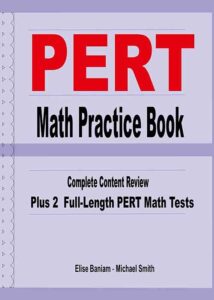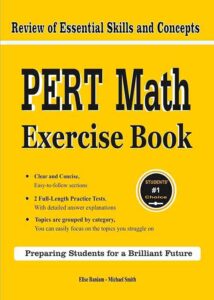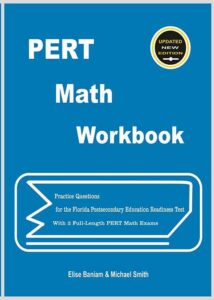
Study Time: 3minutes
What are the formulas for PERT exam?
Introduction: Navigating the PERT Exam Terrain
Preparing for the Program Evaluation and Review Technique (PERT) exam can be daunting without proper guidance. However, with the correct understanding of the formulas, you can confidently and precisely approach the exam. This guide will delve into the fundamental formulas essential for PERT exam success. Whether a student or a professional aiming to advance your career, mastering these formulas will bolster your performance.
Understanding the PERT Exam: What You Need to Know
The PERT exam assesses an individual’s proficiency in project management concepts, particularly in estimating project durations and identifying critical paths. Before we dive into the formulas, let’s briefly explore the structure and significance of the PERT exam.
The Fundamentals of the PERT Exam
1. Defining PERT:
PERT, an acronym for Program Evaluation and Review Technique, is a project management tool used to analyze and represent the tasks involved in completing a project.
2. Purpose of PERT Exam:
The PERT exam evaluates an individual’s comprehension of project management principles, including scheduling, resource allocation, and risk assessment.
3. Importance of PERT Formulas:
Mastering PERT formulas is crucial for accurately estimating project timelines, identifying critical paths, and optimizing resource utilization.
Exploring the Essential Formulas for PERT Exam Success
Now, let’s delve into the core formulas that form the backbone of the PERT exam. Understanding these formulas will empower you to tackle complex project management scenarios with ease.
What are the Formulas for the PERT Exam?
Expected Time (TE):
TE=(O+4M+P)/6
- The expected time formula calculates the average time required to complete a task, considering the optimistic (O), most likely (M), and pessimistic (P) time estimates.
Variance (V):
V=(P−O)/6
- The variance formula measures the degree of uncertainty or risk associated with task completion time. A higher variance indicates greater uncertainty.
Standard Deviation (SD):
SD=√V
- Standard deviation quantifies the dispersion of task completion times around the expected value. It provides insights into the reliability of project timelines.
Optimizing Project Management with PERT Formulas
Identifying Critical Path:
- The critical path comprises tasks with zero slack time, indicating that any delay in these tasks will directly impact the project’s overall timeline.
Resource Allocation:
- PERT formulas facilitate efficient resource allocation by accurately estimating task durations and identifying potential bottlenecks.
Risk Mitigation:
- Understanding variance and standard deviation enables project managers to proactively mitigate risks by allocating buffers and contingency plans.
FAQs: Answering Your Burning Questions
Q: How many formulas must I memorize for the PERT exam?
A: You should focus on mastering the three core formulas, Expected Time, Variance, and Standard Deviation, as they form the foundation of PERT analysis.
Q: Can I use calculators during the PERT exam?
A: Yes, most PERT exams allow calculators, but it’s advisable to confirm with the exam guidelines provided by the administering body.
Q: Are there any shortcuts for calculating PERT formulas?
A: While there are no direct shortcuts, familiarizing yourself with the formulas and practicing sample questions can significantly enhance your calculation speed and accuracy.
Q: How do PERT formulas differ from other project management techniques?
A: PERT formulas focus on probabilistic time estimation, considering optimistic, most likely, and pessimistic scenarios, whereas other techniques may rely on deterministic estimates.
Q: Can I apply PERT formulas in real-world project management scenarios?
A: Absolutely! PERT formulas are widely used in construction and software development industries for accurate project planning and execution.
Q: Where can I find additional resources to practice PERT formulas?
A: Numerous online platforms offer practice tests, tutorials, and study guides tailored explicitly for PERT exam preparation. Additionally, consulting project management textbooks can provide comprehensive insights.
Conclusion: Mastering the Formulas for PERT Exam Success
In conclusion, proficiency in PERT formulas is indispensable for excelling in the PERT exam and enhancing project management skills. Understanding the intricacies of expected time, variance, and standard deviation allows you to navigate complex project scenarios confidently and precisely. Remember to practice regularly, seek clarification on doubts, and approach the exam positively. Best of luck on your journey to PERT exam success!





